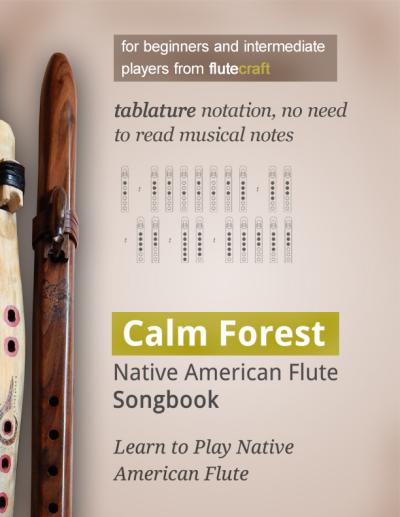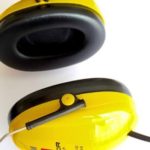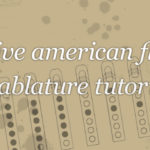My journey with the Native American flutes has its beginning with an episode of the “Northern Exposure” TV show. In the thirteen episode of the third season, the character Ed films Ira Wingfeather, played by Bryson G. Liberty, making duck flutes. Wingfeather says in the show:
“Inside every alder branch, there is a flute – your job is to find it.”
These words have ignited my interest in crafting and playing the flutes. Native American Flutes are wonderful instruments – they have a mystical sound and they are very easy to play. And in the past 30 years, the popularity of this type of flutes expanded far beyond the borders of North America. Today, the NAF (as they are called in short) can be found in most parts of the civilized world.
Style or Not – the Terminology
Let’s start with some terminology :).
Today, we operate with two different terms: the Native American Flute and the Native American Style Flute. Both terms represent the same instrument. The difference is that according to US law, non-Native person cannot use the term Native American Flute – you must be a Native American associated with some Native organization in order to use the main name of the flute. If you’re not, you need to write “Native American Style Flute”, because you do not make a native product, but a product in style of Native product, and the law prohibits the non-Native makers from implying that they make native products – when in reality, they’re not.
For non-US flutemakers it became natural to use the term “Native American Style Flute” – not bound by US law, they still use both terms as a form of respect for Native culture.
And in short, we use the term “NAF” or “NAFlute”, too. Nevertheless, the flute itself – under any of these two names – is the same instrument.
Short History of the Native American Flutes
Clint Goss, a flute scholar and creator of Flutopedia, a great source of knowledge on the Native American Flute, said that the history of the NAF is filled with legends and myths and folk tales, yet with little cold facts. Almost every article on the history of the Native flute begins with the word “Anasazi”.
Well, the oldest known flutes from the North America in general are said to be the Anasazi flutes originating in the years 620-670 of our age. The Hopi Nation used to build similar flutes at the same time. But these were just straight flutes in which the sound had to be created by forming an embouchure with the player’s mouth in order to direct the air onto the splitting edge – it was very difficult to play these flutes.
To simplify things, duct flutes were developed – there was a hole in the mouthpiece, and the air stream was directed through an air channel onto the splitting (cutting) edge in the sound hole. This way, more people could play the flute without spending too much time learning how to play. An European recorder is an example of such duct flute. The oldest flute of this “duct” type that we recognize as “Native American Style” is the Beltrami flute found in 1823. It is difficult to find any proofs of the existance of modern NAF before that time.
There is a theory that the modern NAF has been created by Native Americans based on the European church pipe organs which work in similar way, or maybe the Native Americans copied the way recorders were made. At the same time we know that the duct flutes were nothing new to the Native culture – the River Cane flutes were often made with two chambers and with a flue between them.
And there’s also a theory that the modern Native American style flute is a result of long evolution of the instrument that occured in the lands of North America in the past 1500 years.
In the XX century, the Native American Flute became quite popular – the growing Native movement, the works of Lew Paxton Price, the music art of Carlos R. Nakai, and even the growing New Age music movement, all of these and other factors made the flute popular all around the world.
It happened so due to few factors:
- First, the Native American style flute is very easy to play. It’s front air chamber supports the clarity of the sound, and the simple pentatnic scale allows to play wonderful melodies only after few hours of practice.
- The sound of the Native flute is wonderful – people use the words “spiritual”, “relaxing”, “calming”, “mystic” to define this sound. Because of that, the flute is very popular, simply because people truly appreciate its voice.
This wonderful sound and the simplicity of playing the instrument is a result of the way the flute is build.
The Anatomy of the Native American Style Flute
The NAF is a straight flute, or end-blown flute, similar to European recorder. It has a north end (head end) with a mouthpiece (or should I say, a mouth hole), and a south end (foot end) which marks the end of the flute. It has two chambers inside – the first, northern chamber is the Slow Air Chamber – known as SAC. The second chamber is the main bore, the main chamber in which sound is made. It is known as the sound chamber, as well. Between these two chambers, there is a wall, a plug, which separates the two chambers apart. Above this plug, a sound mechanism is placed.

Source: http://en.wikipedia.org/wiki/Native_American_flute#/media/File:Native_American_flute_Composite_Anatomy.jpg
The sound mechanism begins with nest – the whole area of the sound mechanism is called the nest.
Basically, we call it the nest, because the block placed on it is often called a “bird”, and it was sometimes carved to represent a bird.
In the nest, there are two holes – one that leads the air from the Slow Air Chamber into the flue, and one leading to the sound chamber – this second hole is called True Sound Hole, because this is where the sound is actually produced. The flue between them is also known as an air channel – this is where the air travels from the SAC into the cutting edge placed on the south end of the TSH. On the nest, a block is placed – a piece of wood that is either very simple, or very carved to represent an animal, for example – it closes the flue from the top, thus directing the air into the TSH.
When the air is blown into the mouth hole, it travels into the Slow Air Chamber, which helps regulate the pressure of the air, thus supporting the clarity of the steady sound made by the flute. Then, from the SAC, the air travels through the flue into the cutting edge in the True Sound Hole. There, the air stream is splitted into two – one stream escapes, and the second stream enters the sound chamber, where the sound wave resonates. This process makes the sound. The longer the flute is, the lower the sound is. Low flutes are long, and high flutes are short.
Between the True Sound Hole and the end of the flute, five or six finger holes are placed. By opening them and closing them, we can create melodies, because the sound changes – once the hole is open, the flute becomes “shorter”, because the air escapes through the finger hole, and not through the end of the flute. Thus, the flute can play melodies.
The Pentatonic Scale
The simplicity of playing the flute depends on the pentatonic scale – it is a simple music scale, in which all the notes sound harmonious together. Thus, creating melodies is very, very simple.
Most scholars agree that the Native Americans had different scales for their flutes, which were more or less close to what we known as modern pentatonic scale. But most modern flutes are tuned to a perfect pentatonic scale – a scale closely associated with the European music theory. While the modern pentatonic scale is not traditional, it remains one of the most mystical and spiritual scales in the world.
The pentatonic scale requires 5 holes. Often, the six hole is added to the flute by the maker – some players do use it, some do not.
Summary
Now you know what Native American style flute is – from here, you can learn how to build the flute, or just how to play it. Or both. In any case, the flute brings joy, peace of mind and a way to make our life happier.
Don't forget to become a fan on Facebook and subscribe to new posts via RSS or via email.










 via EMAIL
via EMAIL